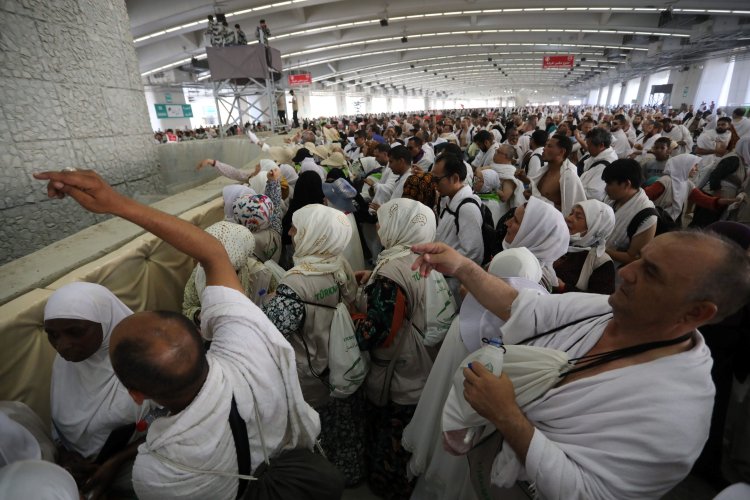Hajj Pilgrims Perform Symbolic Stoning of the Devil

Muslim pilgrims performed a symbolic stoning of the devil, the riskiest part of the annual haj pilgrimage as large numbers of people gather to perform the ritual.
After spending the previous night camped out in the open air in Muzdalifah, Hajj pilgrims made their way back to Mina and Mecca to perform the final rites of the pilgrimage, one of which is the "stoning of the devil" ritual.
Pilgrims arrived in Mina after they spent the night in Muzdalifah plain where they gathered pebbles to throw at stone columns symbolizing the devil.
The ritual of stoning, known as Jamarat, marks the first day of Eid al-Adha, or the feast of sacrifice, which is celebrated by Muslims across the globe.
The ritual involves casting stones at three pillars that symbolize the devil. On the first day of Eid, pilgrims throw small pebbles or stones, gathered in Muzdalifah, at the Great Aqaba column.
Pilgrims will walk in crowds through a multilevel structure housing three pillars symbolizing the devil.
The ritual symbolizes the experience of the Prophet Ibrahim, who the devil tried to dissuade from obeying God’s order to sacrifice his son, Ismail.
The ritual will continue over the next two days, before pilgrims perform the final Tawaf – the circumambulation of the Kaaba at the Grand Mosque – to complete their Hajj.
Eid Al Adha is marked by prayers and the sacrifice of a sheep, goat or cow by those who can afford it, with the meat shared among family members and with the poor.
Muslims believe the Prophet Ibrahim was commanded by God to sacrifice his son, Ismail, but God spared him and sent a ram in his place.















